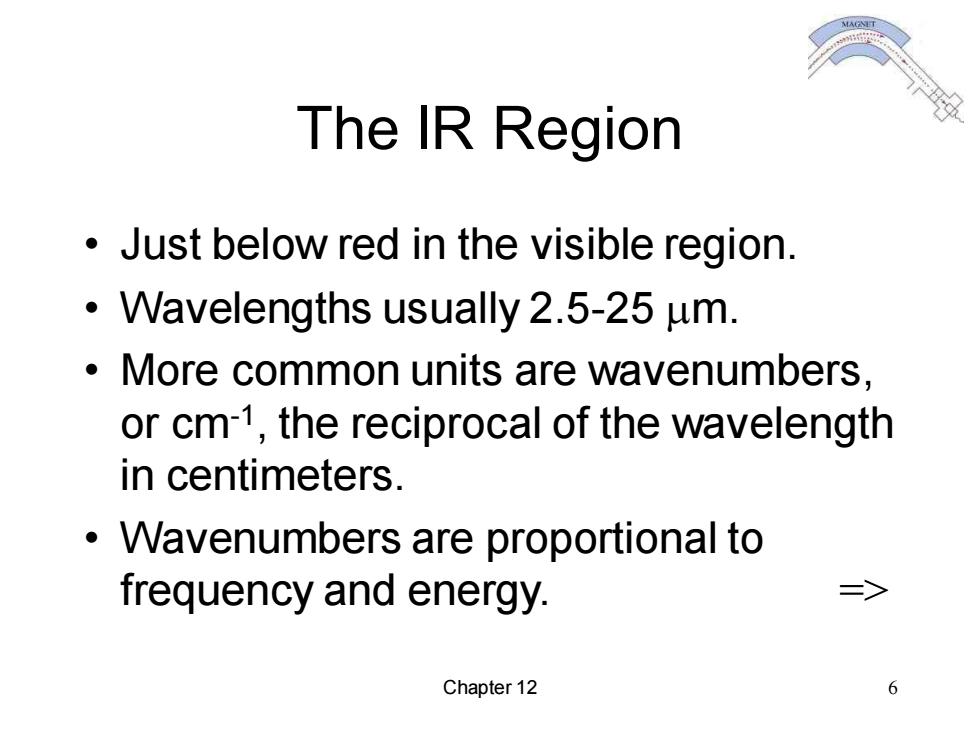
The IR Region Just below red in the visible region. Wavelengths usually 2.5-25 um. More common units are wavenumbers, or cm-1,the reciprocal of the wavelength in centimeters. Wavenumbers are proportional to frequency and energy. Chapter 12 6
Chapter 12 6 The IR Region • Just below red in the visible region. • Wavelengths usually 2.5-25 mm. • More common units are wavenumbers, or cm-1 , the reciprocal of the wavelength in centimeters. • Wavenumbers are proportional to frequency and energy. =>
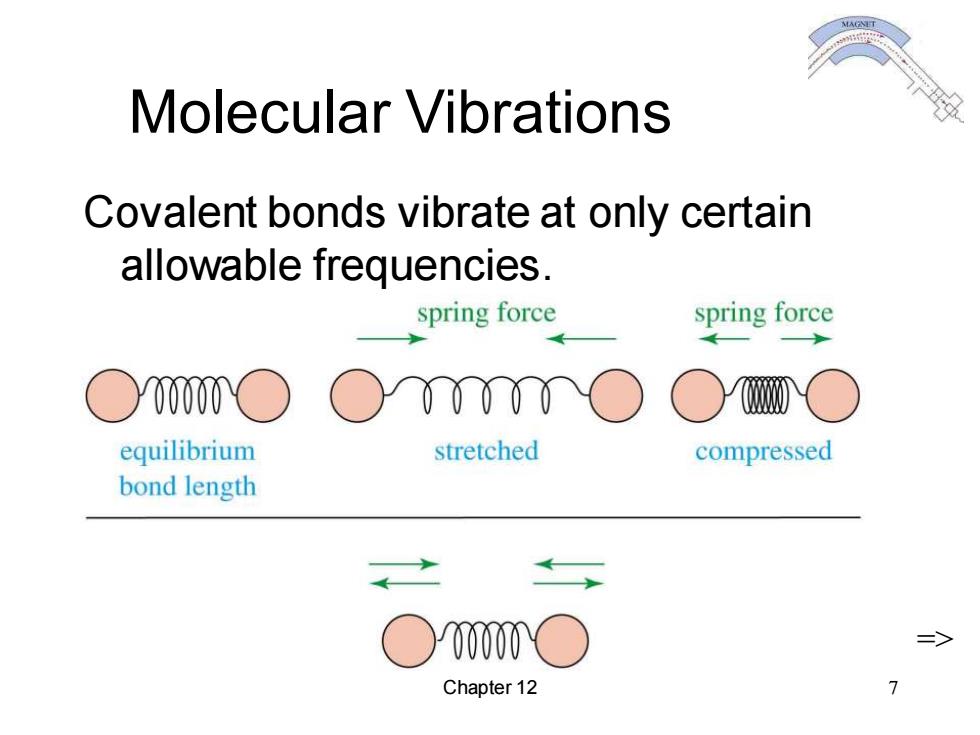
Molecular Vibrations Covalent bonds vibrate at only certain allowable frequencies. spring force spring force 00000○ equilibrium stretched compressed bond length ○y00000Y Chapter 12
Chapter 12 7 Molecular Vibrations Covalent bonds vibrate at only certain allowable frequencies. =>
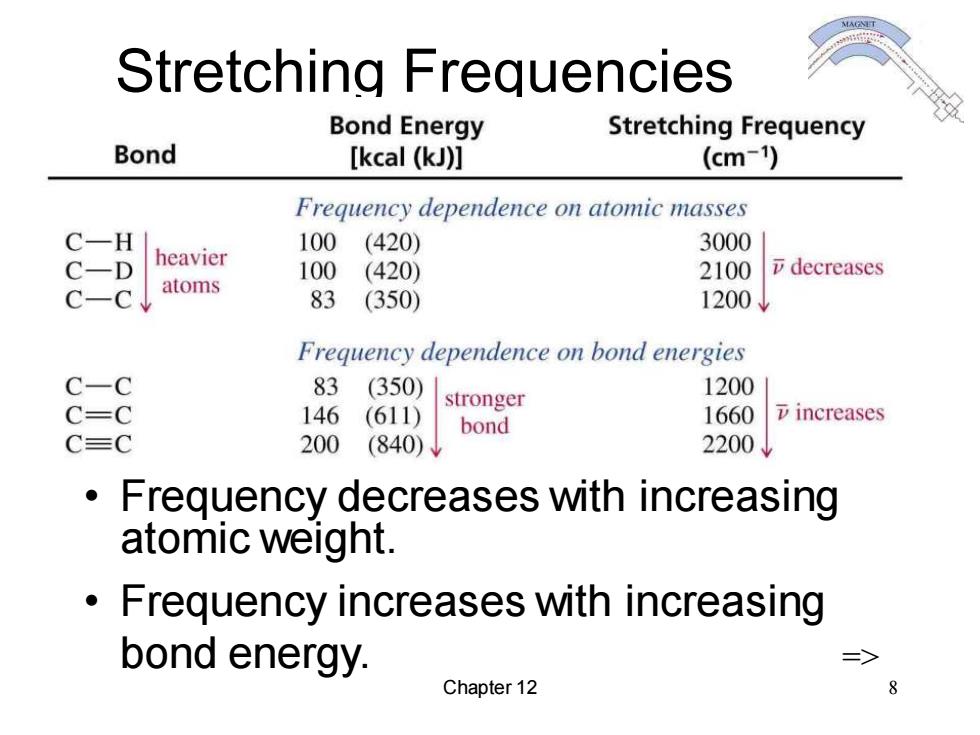
Stretching Frequencies Bond Energy Stretching Frequency Bond [kcal (kJ)] (cm-1) Frequency dependence on atomic masses 100(420) 3000 heavier C-1 100 (420) 2100 v decreases C-C atoms 83 (350) 1200 Frequency dependence on bond energies C-C 83 (350) 1200 stronger C=C 146 (611) 7 increases bond 1660 C≡C 200 (840) 2200 Frequency decreases with increasing atomic weight. Frequency increases with increasing bond energy. Chapter 12 8
Chapter 12 8 Stretching Frequencies • Frequency decreases with increasing atomic weight. • Frequency increases with increasing bond energy. =>
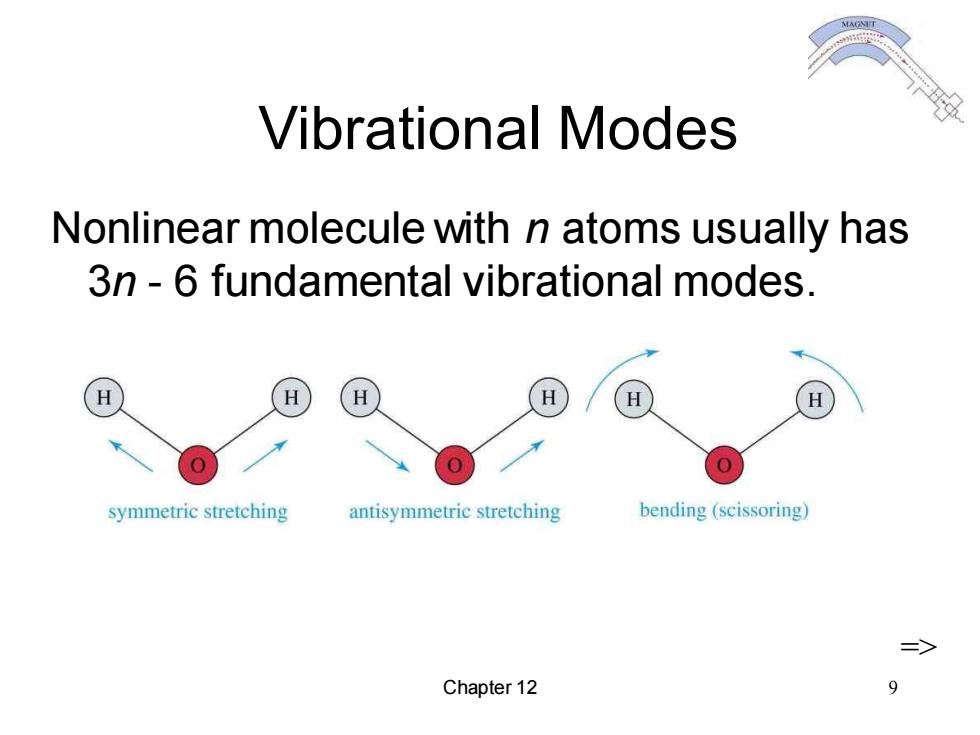
Vibrational Modes Nonlinear molecule with n atoms usually has 3n-6 fundamental vibrational modes. symmetric stretching antisymmetric stretching bending(scissoring) Chapter 12
Chapter 12 9 Vibrational Modes Nonlinear molecule with n atoms usually has 3n - 6 fundamental vibrational modes. =>
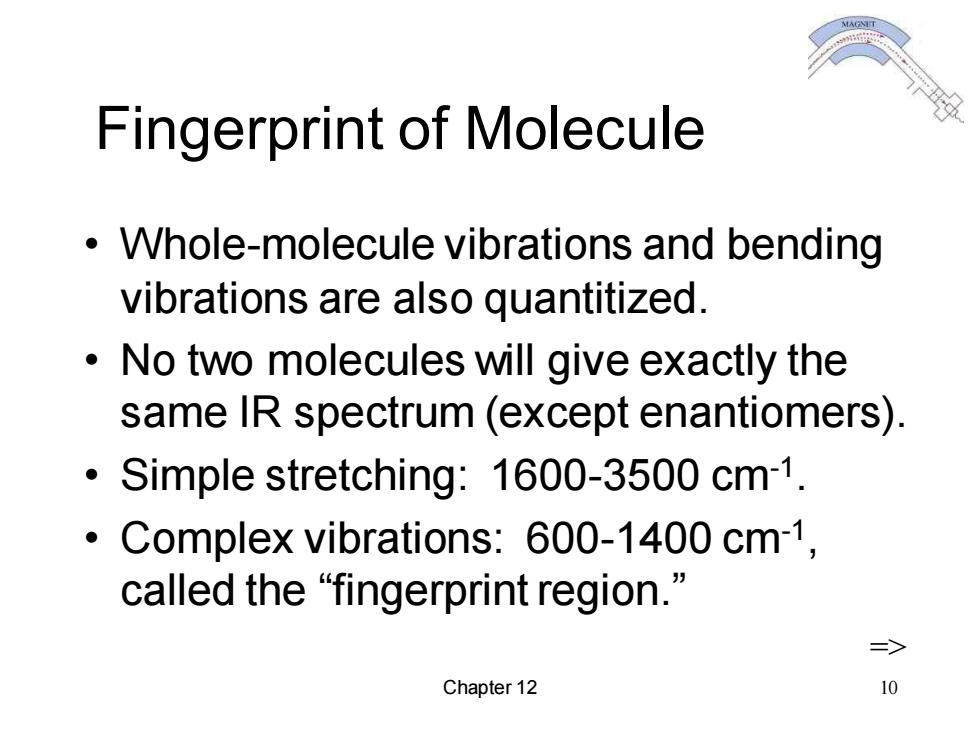
Fingerprint of Molecule Whole-molecule vibrations and bending vibrations are also quantitized. No two molecules will give exactly the same IR spectrum (except enantiomers) Simple stretching:1600-3500 cm-1. Complex vibrations:600-1400 cm-1, called the“fingerprint region.” 二> Chapter 12 10
Chapter 12 10 Fingerprint of Molecule • Whole-molecule vibrations and bending vibrations are also quantitized. • No two molecules will give exactly the same IR spectrum (except enantiomers). • Simple stretching: 1600-3500 cm-1 . • Complex vibrations: 600-1400 cm-1 , called the “fingerprint region.” =>